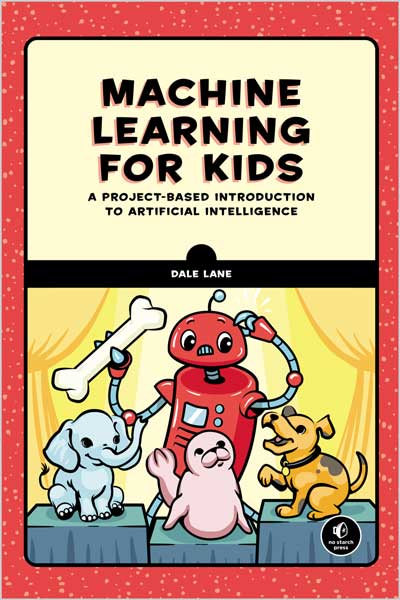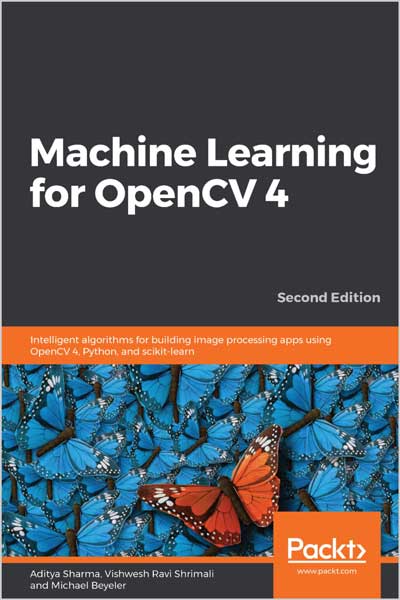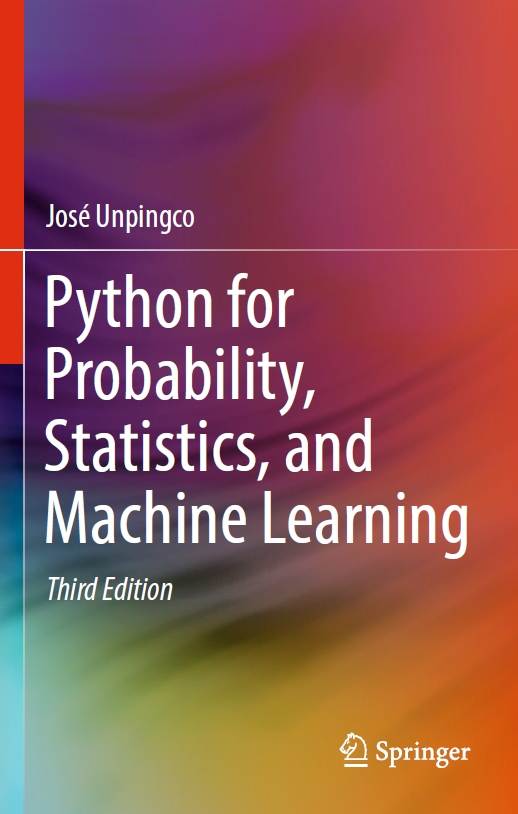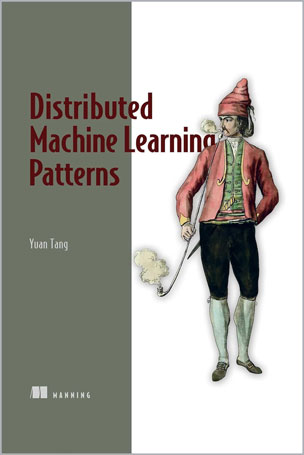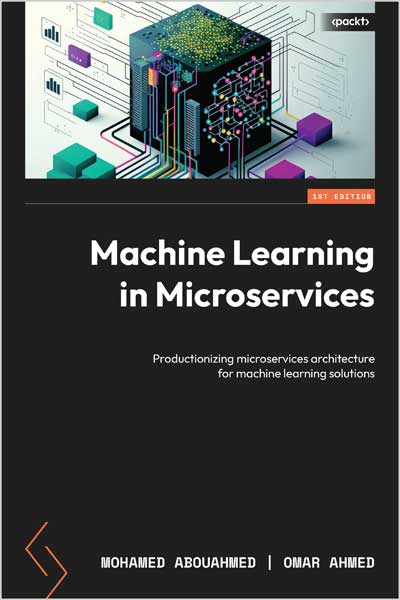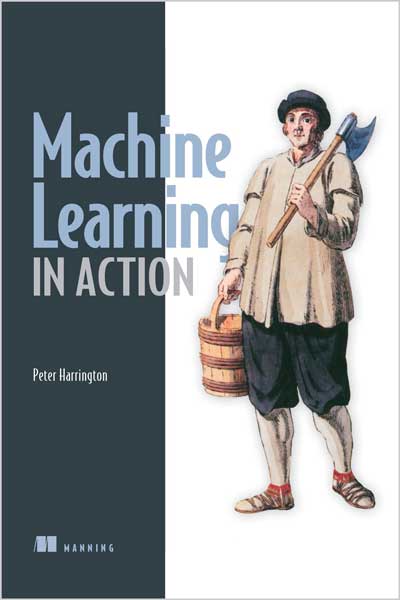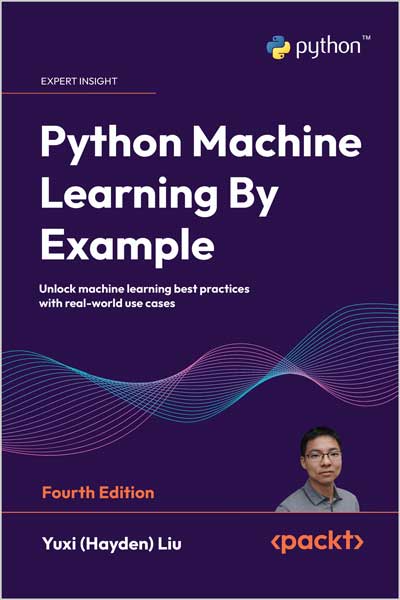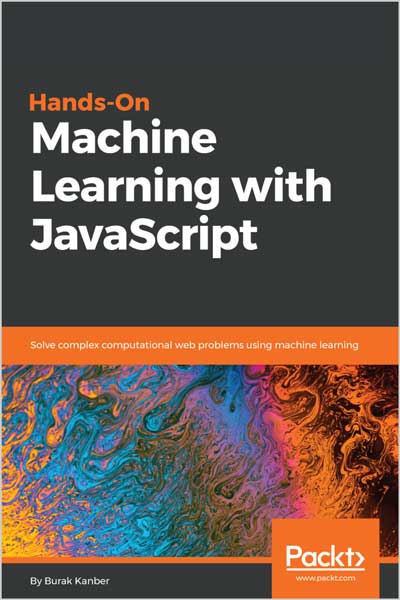From Building Trading Strategies to Robo-Advisors Using Python
Hariom Tatsat, Sahil Puri, and Brad Lookabaugh
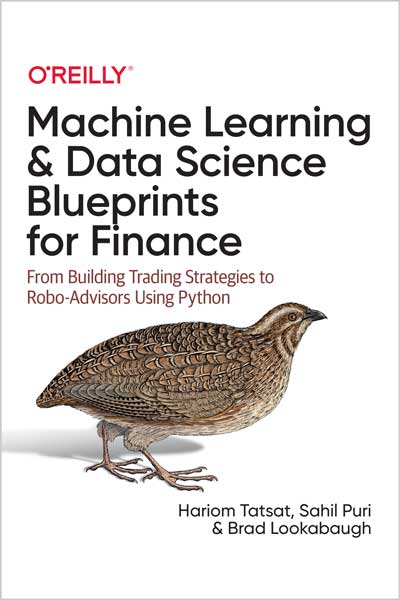
#Machine_Learning
#ML
#Data_Science
#Blueprints
#Robo-Advisors
#Python
#NLP
Over the next few decades, machine learning and data science will transform the finance industry. With this practical book, analysts, traders, researchers, and developers will learn how to build machine learning algorithms crucial to the industry. You'll examine ML concepts and over 20 case studies in supervised, unsupervised, and reinforcement learning, along with natural language processing (NLP).
Ideal for professionals working at hedge funds, investment and retail banks, and fintech firms, this book also delves deep into portfolio management, algorithmic trading, derivative pricing, fraud detection, asset price prediction, sentiment analysis, and chatbot development. You'll explore real-life problems faced by practitioners and learn scientifically sound solutions supported by code and examples.
This book covers:
- • Supervised learning regression-based models for trading strategies, derivative pricing, and portfolio management
- • Supervised learning classification-based models for credit default risk prediction, fraud detection, and trading strategies
- • Dimensionality reduction techniques with case studies in portfolio management, trading strategy, and yield curve construction
- • Algorithms and clustering techniques for finding similar objects, with case studies in trading strategies and portfolio management
- • Reinforcement learning models and techniques used for building trading strategies, derivatives hedging, and portfolio management
- • NLP techniques using Python libraries such as NLTK and scikit-learn for transforming text into meaningful representations
About this book
The value of machine learning (ML) in finance is becoming more apparent each day. Machine learning is expected to become crucial to the functioning of financial markets. Analysts, portfolio managers, traders, and chief investment officers should all be familiar with ML techniques. For banks and other financial institutions striving to improve financial analysis, streamline processes, and increase security, ML is becoming the technology of choice. The use of ML in institutions is an increasing trend, and its potential for improving various systems can be observed in trading strategies, valuation, and risk management.
Although machine learning is making significant inroads across all verticals of the financial services industry, there is a gap between the ideas and the implementation of machine learning algorithms. A plethora of material is available on the web in these areas, yet very little is organized. Additionally, most of the literature is limited to trading algorithms only.
Machine Learning and Data Science Blueprints for Finance fills this void and provides a machine learning toolbox customized for the financial market that allows the readers to be part of the machine learning revolution. This book is not limited to investing or trading strategies; it focuses on leveraging the art and craft of building ML-driven algorithms that are crucial in the finance industry.

Implementing machine learning models in finance is easier than commonly believed. There is also a misconception that big data is needed for building machine learning models. The case studies in this book span almost all areas of machine learning and aim to handle such misconceptions. This book not only will cover the theory and case studies related to using ML in trading strategies but also will delve deep into other critical “need-to-know” concepts such as portfolio management, derivatives, fraud detection, corporate credit ratings, robo-advisor development, and chatbot development. It will address real-life problems faced by practitioners and provide scientifically sound solutions supported by code and examples.
The Python codebase for this book on GitHub will be useful and serve as a starting point for industry practitioners working on their projects.
The examples and case studies shown in the book demonstrate techniques that can easily be applied to a wide range of datasets. The futuristic case studies, such as reinforcement learning for trading, building a robo-advisor, and using machine learning for instrument valuation inspire readers to think outside the box and motivate them to make the best of the models and data available.
Who This Book Is For
The format of the book and the list of topics covered make it suitable for professionals working in hedge funds, investment and retail banks, and fintech firms. They may have titles such as data scientist, data engineer, quantitative researcher, machine learning architect, or software engineer. Additionally, the book will be useful for those professionals working in support functions, such as compliance and risk.
Whether a quantitative trader in a hedge fund is looking for ideas in using reinforcement learning for trading cryptocurrency or an investment bank quant is looking for machine learning–based techniques to improve the calibration speed of valuation models, this book will add value. The theory, concepts, and codebase mentioned in the book will be extremely useful at every step of the model development lifecycle, from idea generation to model implementation. Readers can use the shared codebase and test the proposed solutions themselves, allowing for a hands-on reader experience. The readers should have a basic knowledge of statistics, machine learning, and Python.
